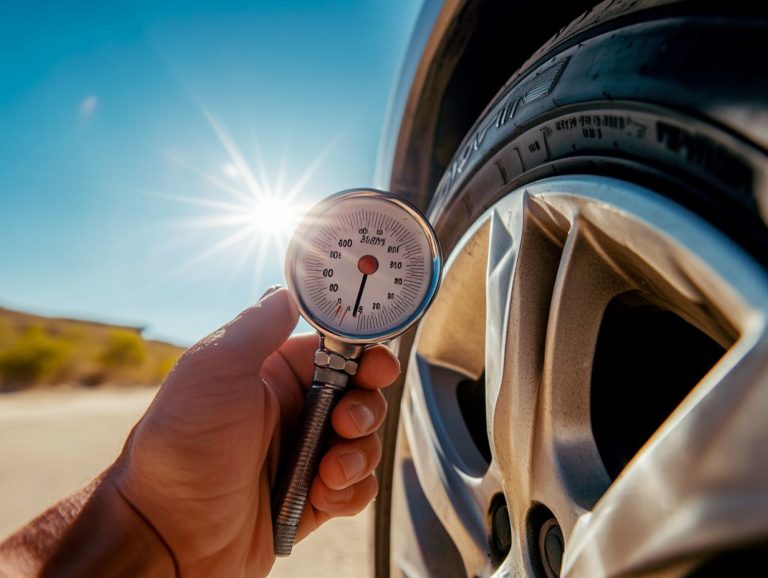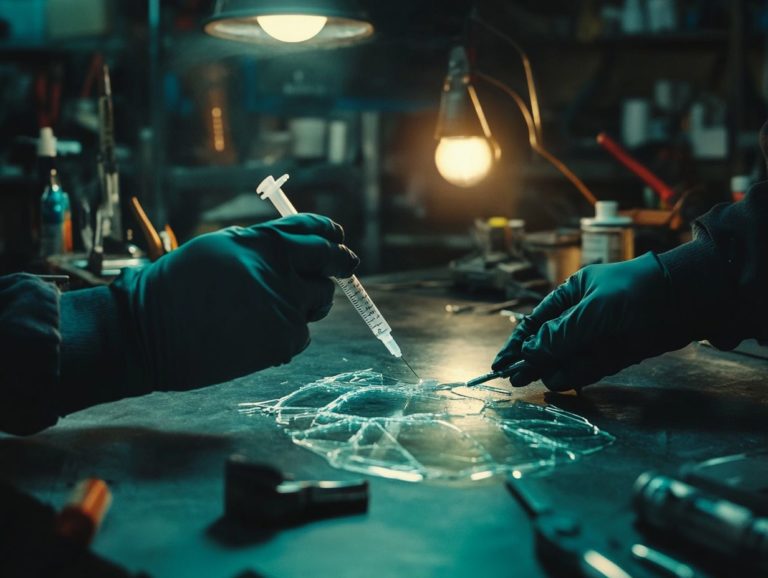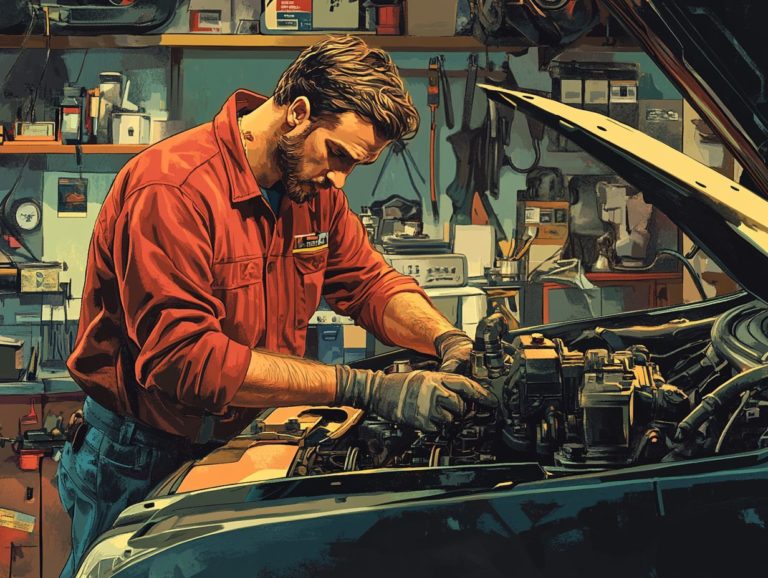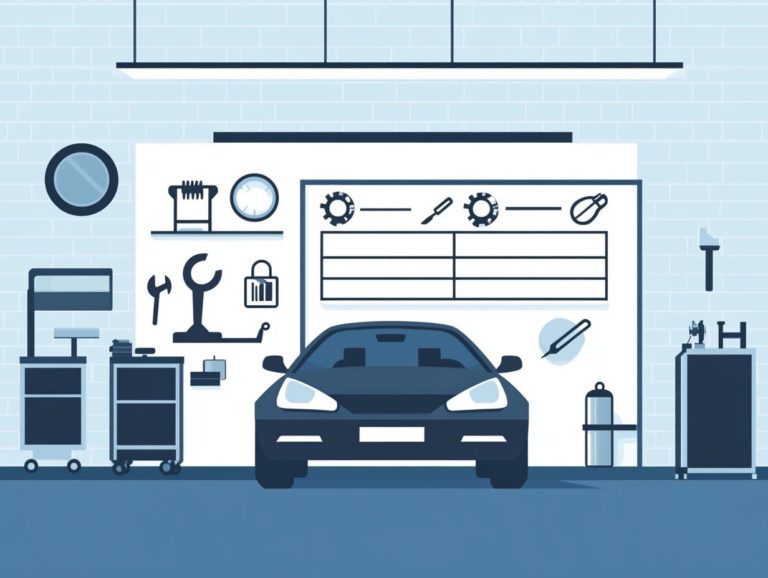How to Maintain Your Car’s Seat Belts
Seat belts play a vital role in your safety on the road, often overlooked until something goes wrong. Don t wait! Inspect your seat belts now to keep everyone safe.
By engaging in regular maintenance, you can significantly extend their lifespan and ensure they deliver the protection you need. This article delves into the importance of inspecting seat belts, identifying common issues, and recognizing the right moments for replacement.
You ll also discover effective cleaning techniques and proper storage methods. Explore valuable insights for keeping your seat belts in peak condition your safety truly hinges on it.
Key Takeaways:
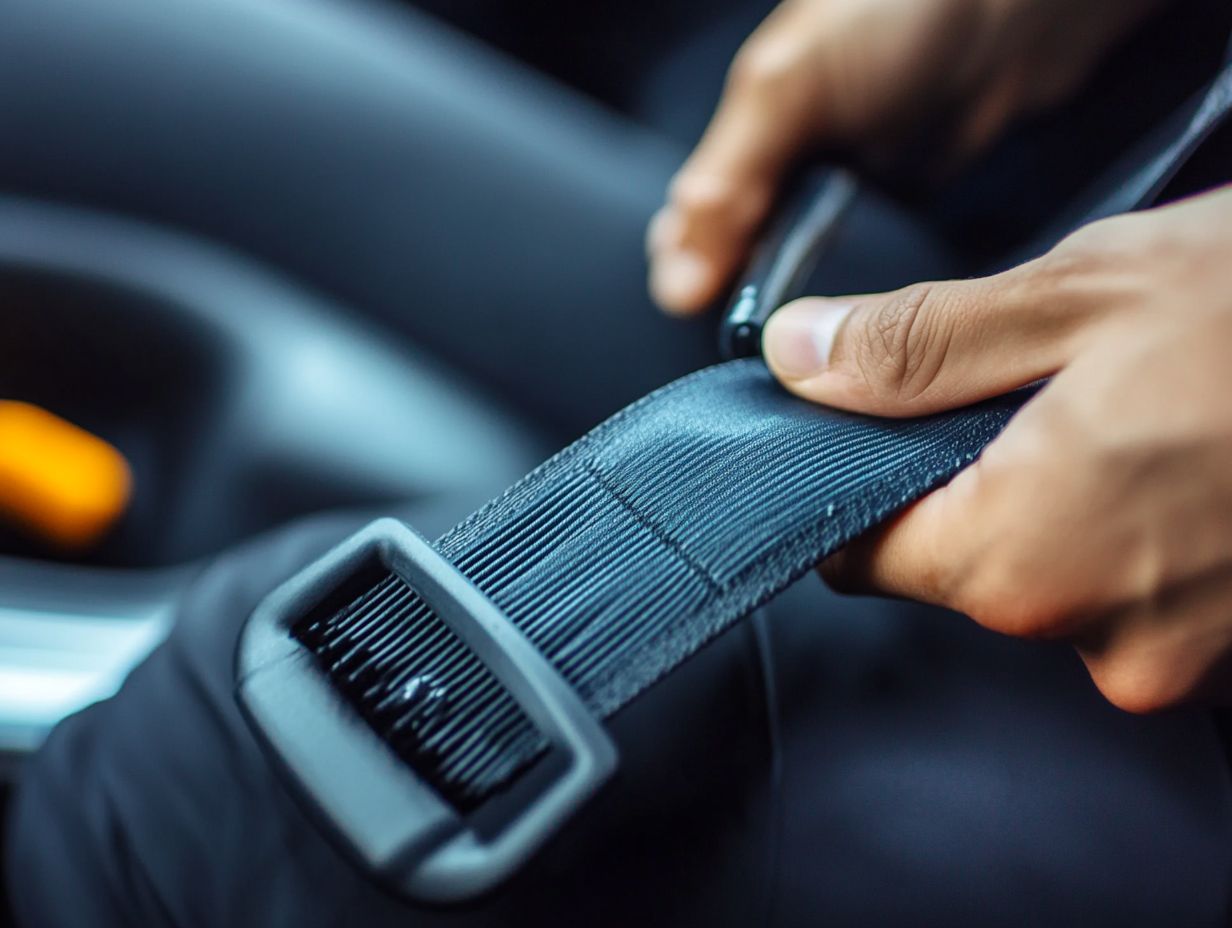
- Inspect your car’s seat belts regularly to catch issues early.
- Replace worn or damaged seat belts immediately to ensure safety for yourself and your passengers.
- Clean and store your seat belts properly to prolong their lifespan and maintain functionality.
Importance of Maintaining Seat Belts
Maintaining seat belts is essential for ensuring the safety of you and your passengers. They serve as your primary defense against potentially fatal injuries during collisions. When seat belts function properly, they not only shield you from crash forces but also enhance the effectiveness of other safety features, such as airbags.
Regular maintenance, including thorough inspections and cleaning, can help prevent seat belt syndrome and ensure that these critical safety features perform optimally when it matters most. Given the alarming statistics surrounding traffic accidents, it s clear that seat belts play a vital role in injury prevention.
Studies reveal that wearing seat belts can reduce the risk of death by as much as 45% for front-seat passengers in cars and an impressive 60% in trucks. This underscores why seat belt compliance is not merely a legal obligation; it s a moral one.
By buckling up, you re not just protecting yourself; you re fostering a culture of safety on the roads. Conducting regular checks on your seat belts ensures they function correctly and maximize their protective capabilities, leading to safer journeys for everyone involved.
Inspecting Seat Belts
Inspecting seat belts is an essential aspect of vehicle maintenance that you can’t afford to overlook. It allows you to identify any signs of wear, damage, or malfunction that could jeopardize your driving safety.
During your inspections, pay close attention to key areas such as buckle parts, webbing clips, and the overall integrity of the belts. Ensuring a secure fit for all passengers is paramount.
By recognizing signs of damage early, you can prevent potential failures during a crash, thereby preserving the seat belt s effectiveness as a critical safety feature.
Visual Checks and Common Issues
Conducting visual checks on your seat belts can unveil common issues that might put the safety of your vehicle occupants at risk, such as frayed webbing or damaged buckle parts. Regularly inspecting the buckle areas for debris and ensuring proper installation is essential for upholding the seat belt’s integrity.
While performing these visual inspections, remember the cleaning process; dirt and grime can impede the functionality of critical safety features.
Check the length and retraction mechanism of the belt, ensuring it glides smoothly and locks into place without sticking. Problems like twisted belts or discolored fabric might indicate wear that compromises safety.
To keep everything functioning optimally, ensure the buckle and surrounding areas are free from obstruction. Regularly vacuuming these spots and using a damp cloth with mild soap can help maintain cleanliness.
Inspect the fastening points for rust or corrosion to catch potential issues before they escalate, highlighting the importance of proactive vehicle maintenance.
Take action now for your safety! Regular maintenance of seat belts is your responsibility and a crucial step in ensuring a safe journey for everyone.
Replacing Worn or Damaged Seat Belts
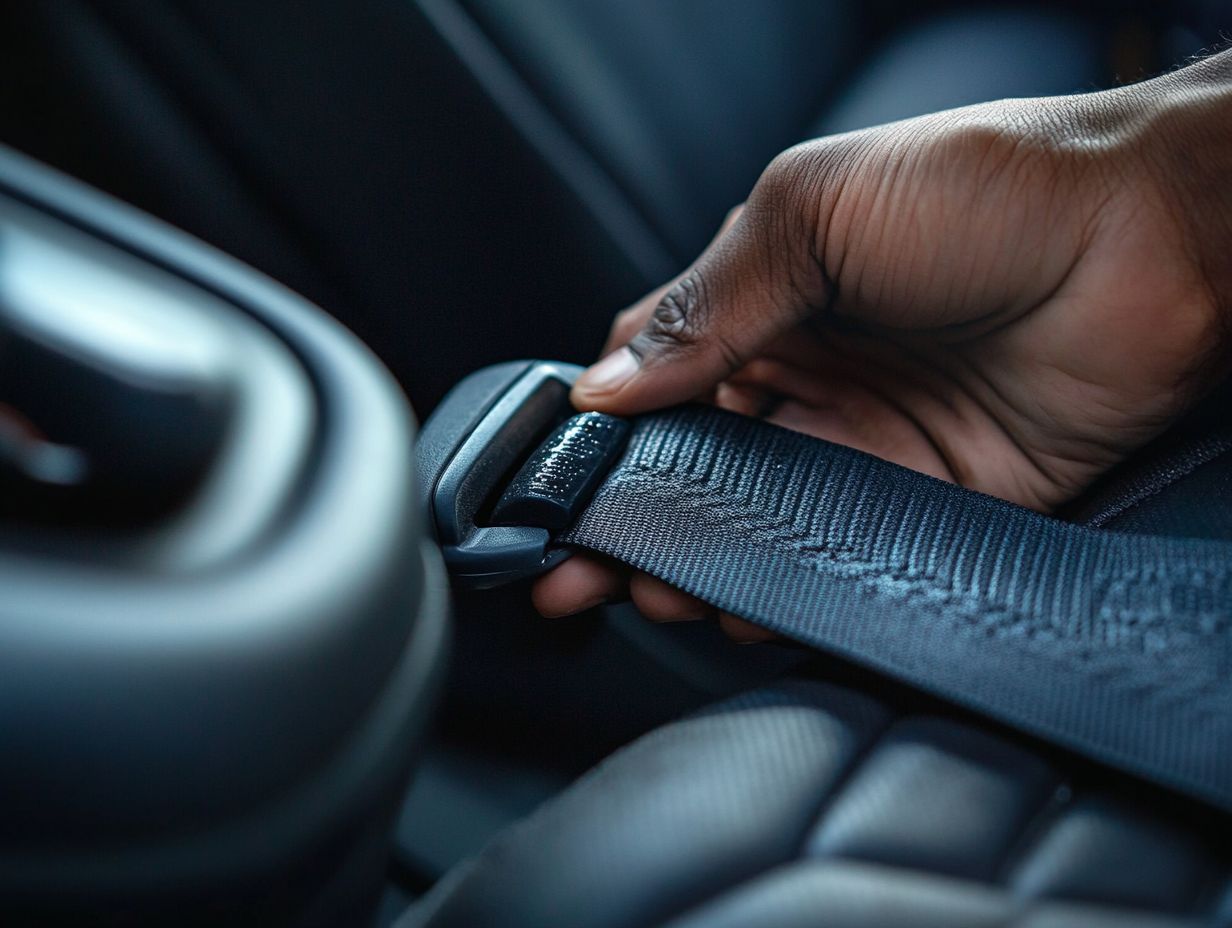
Replacing worn or damaged seat belts is essential for your vehicle’s safety. Damaged seat belts can lead to serious problems in an accident.
You should replace seat belts as soon as you notice any damage. This ensures a proper fit for optimal protection. Laws and recommendations from seat belt experts emphasize the importance of immediate replacement when their integrity is in question, especially in passenger vehicles. Your safety and that of your passengers depends on it.
When to Replace and How to Do It
Knowing when and how to replace seat belts is vital for maintaining your vehicle’s safety features. Replace seat belts right away if you see signs of fraying, wear, or malfunctioning components like buckle tongues and webbing clips.
By following safety recommendations from seat belt experts, you can ensure proper installation and achieve a secure fit, which enhances your overall driving safety.
It’s essential to assess your seat belts regularly, especially after any accidents. Even minor collisions can compromise this crucial safety feature. When you’re ready to replace them, gather the necessary tools, consult your vehicle’s manual for specific instructions, and consider professional help if you’re unsure.
Proper installation guarantees optimal performance during a crash and minimizes the risk of injury. A well-fitted seat belt will hold passengers securely, distributing forces during an impact and dramatically reducing the chances of serious injuries.
Cleaning and Storing Seat Belts
Cleaning and storing seat belts carefully is crucial for their longevity and effectiveness. For more information on this topic, check out our guide on how to maintain your vehicle’s safety features. This ensures a secure fit and optimal performance when you need them most.
Cleaning typically involves a gentle scrub with suitable products. Avoid harsh detergents that could harm the webbing or clips.
Proper storage is equally important; it helps prevent unnecessary wear when seat belts are not in use, ultimately enhancing your vehicle’s overall safety.
Proper Cleaning Techniques
Proper cleaning techniques are essential to maintain the integrity of seat belts. Clean them effectively to remove dirt and grime without damaging the webbing. Use the right materials and avoid strong detergents that could compromise seat belt effectiveness.
Utilize a gentle mixture of mild soap and warm water. Apply it with a soft cloth or sponge to avoid fraying the fibers. For stubborn stains, a soft-bristled brush can work wonders, but scrub gently there s no need to channel your inner power washer. Periodically inspect the straps for signs of wear or damage. Regular maintenance prevents dirt accumulation, which can hinder the seat belt s locking mechanism during emergencies.
Keeping your seat belts clean and well-maintained is vital not just for appearance, but for ensuring maximum efficiency and safety during your travels.
Storing Seat Belts When Not in Use
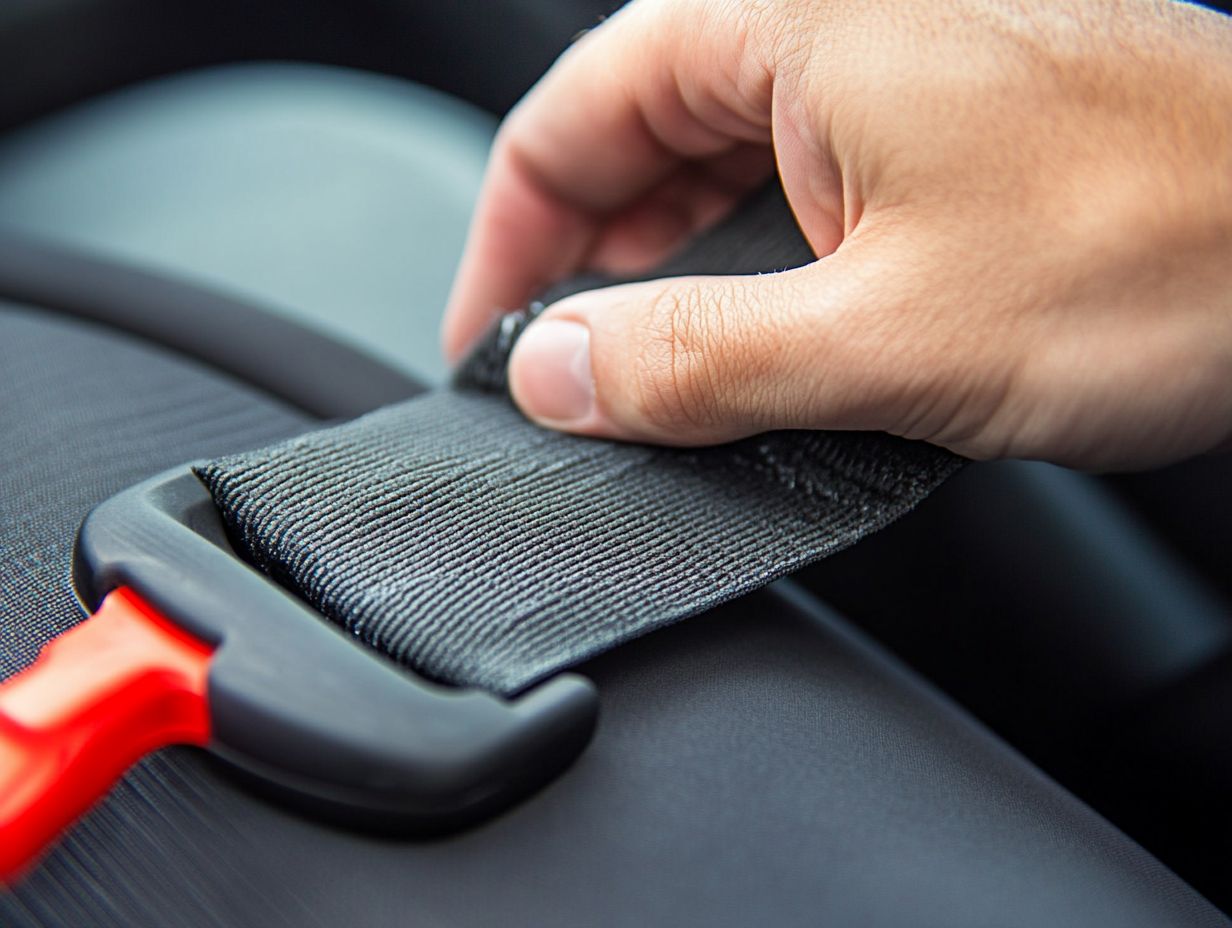
Storing seat belts when they’re not in use is often an overlooked aspect of vehicle maintenance. Yet, it plays a crucial role in preserving their functionality and secure fit.
Proper storage prevents unnecessary wear, ensuring that your seat belts remain a reliable safety solution for everyone in the vehicle. Understanding the best practices for storing seat belts can significantly enhance their longevity and effectiveness over time.
To optimize their lifespan, avoid direct sunlight exposure as it can degrade the fabric and stitching. Keep the belts free from clutter to maintain their condition and ensure they aren’t twisted or snagged.
Consider using dedicated storage solutions such as belt retainers or clips. These can keep them in place and prevent tangling or fraying.
Regularly inspecting your seat belts for signs of wear or damage is vital. Any damaged parts should be addressed immediately to uphold safety standards.
By incorporating these straightforward yet effective strategies, you can ensure your seat belts serve as dependable safety devices for years to come.
Tips for Maintaining Seat Belts
To maintain your seat belts effectively, adhere to essential safety recommendations that guarantee a secure fit for everyone in the vehicle, and don’t forget to check out tips for maintaining your car’s leather seats to keep your interior in top condition.
Regular maintenance, including thorough inspections and cleaning, allows you to spot potential issues early, significantly enhancing your overall driving safety.
By cultivating consistent safety habits like buckling up every single time you get into a vehicle you reinforce the importance of seat belt use and ensure compliance with seat belt laws.
Your commitment to these practices not only protects you but also sets a positive example for others.
Preventative Measures for Longevity
Implementing preventative measures is crucial for ensuring the longevity and effectiveness of seat belts, essential safety features in your vehicle.
Regular maintenance, proper installation, and adherence to safety laws can significantly enhance child safety and protect all occupants from potential injuries.
Knowing what can damage your seat belts helps you take action. For instance, ensuring that seat belts are correctly anchored and retract smoothly can prevent unnecessary wear and tear.
Equally important is avoiding any obstructions that could hinder their function. It s essential for you and your passengers to understand and comply with local seat belt regulations, as they safeguard everyone in the vehicle, especially vulnerable children.
Educating your family about the importance of proper seat belt usage and routinely inspecting the belts for signs of fraying or damage can further extend their lifespan.
This not only contributes to a safer driving experience but also fosters a culture of safety within your vehicle.
Frequently Asked Questions
- 1. How often should I maintain my car’s seat belts?
Inspect at least once a year. - 2. What are the signs that my seat belts need maintenance?
Look for fraying, difficulty pulling, or unusual noises. - 3. Can I clean my car’s seat belts?
Yes, use a mild soap and water solution. Gently scrub the belts and let them air dry before using them again. - 4. How do I properly store my seat belts when not in use?
To properly store your seat belts, release them from their locked position and let them fully retract before storing them. Avoid twisting or folding the belts to prevent damage. - 5. How do I test if my seat belts are functioning properly?
You can test your seat belts by gently pulling on them to ensure they are securely locked. Also, check the retraction and locking mechanism for any issues.
6. Can I replace my car’s seat belts on my own?
Replacing seat belts on your own isn’t a good idea.
It’s crucial to have a professional do it to ensure they work properly and keep you safe.

